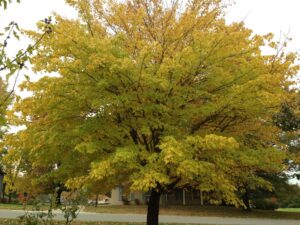Trees are a great addition to any property, as they add beauty and curb appeal. However, some types of trees can cause significant plumbing and foundation problems in your home. Many popular trees chosen to plant around your home can grow roots that burrow into the cracks of your home’s structure and plumbing over time.
These roots can cause significant damage to your home’s existing foundation, structure, and pipes that lead into or out of the house.
While there are many foundation and plumbing-friendly trees you can choose to plant, we will focus on those that can cause problems so that you can use this as a guide when making landscaping decisions for your home.
Why and How These Trees Can Cause Plumbing Problems Firstly
Let’s talk about why plants invade your home’s foundation or plumbing. Trees don’t try to cause trouble on purpose – they need water, nutrients, or additional space to grow.
Some types of trees require large amounts of water to survive. If they’re not getting enough water, they will send their roots to search for it, and the nearest source is usually your pipes. Unfortunately, most pipes aren’t strong enough to withstand the foundation penetration of a thirsty tree.
Another thing to consider is that the spread of a tree’s height is often constant because of the space left around the tree for the foundation system to spread and grow – they need plenty of space to grow upward and outward.

You should avoid the following trees or even remove them (if possible) from your home landscape – unless you have a large property with ample space for them to grow unobstructed.
-
Willow Trees :
The natural habitat of a willow is damp and nutrient-rich. Most home yards don’t have soil capable of providing enough nutrients for this type of tree to survive, and it will actively search for it at all costs. The willow is to be massive and grand, so it needs a lot of land space to flourish and grow properly.
-
Citrus Trees:
Lemon, Mango, Orange, and Grapefruit Delicious citrus fruit trees require a lot of elements, moisture, sunshine, and nutrients. Unfortunately, locations near a home or building seldom provide citrus trees with what they need, causing their roots to venture into your pipes where they grow and expand, causing significant damage and issues to the surrounding pipes and home structure. Homeowner associations often veto the planting of citrus fruit trees for this reason.
-
Birch Trees:
Tall, elegant, and beautiful, Birch Trees can grow anywhere from forty to fifty feet into the air. Now imagine that a birch scheme can grow anywhere from two to three times the tree’s maximum height. You can see how planting this tree near your home could be a huge problem. These trees need plenty of space to grow and expand their roots.
-
Poplar Tree:
These tall trees provide shade and beauty that are attractive to homeowners. However, note that all thirty-five varieties have incredibly invasive root systems that increase near the surface, making them unfavorable choices for planting near homes.
Poplar trees can cause significant damage because the foundation system grows two to three times the tree’s height. The average height for a trembling aspen tree is between eighty and fifty feet, which means the roots can grow anywhere from one hundred and sixty to 450 feet out from the base of the tree.
-
Magnolia Trees:
They’re so pretty! We know! Magnolia trees are beautiful, almost enchanting in appearance, with their massive, sturdy leaves and their captivating floral blooms. But Magnolia tree roots have a significant, rope-like appearance and structure, and these roots tend to grow on the land’s surface rather than deep into the ground.
The flexibility of the rope-like roots, combined with the shallow surface, causes these trees to cause severe damage to the structure and plumbing of a home. The origins are flexible and will find cracks and leaks, working their way into the surrounding pipes as they search for the closest water supply.
-
Oak Trees:
It takes dozens of years to reach maturity, but the slow-growing scheme of the majestic tree can quietly ravage a home’s structure and plumbing. An oak tree’s scheme has a main root called the taproot that grows straight down into the ground to provide nutrients and moisture as it grows.
When the tree matures, additional roots can grow laterally, which can cause problems for sewer and plumbing systems. The origins can Grow up to a hundred yards from the tree’s base; the roots can work their way into the cracks of your pipes and continue to spread – causing damage and blockages to the sewer and plumbing lines.
In conclusion, if you plan to plant trees near your home, you must know the types of trees that can cause plumbing and foundation problems. By avoiding or removing these trees, you can prevent significant damage to your home over time.
Arch Plumbing is in St Charles, Missouri, and has been in the service business since 2008, providing quality plumbing services.



Recent Comments